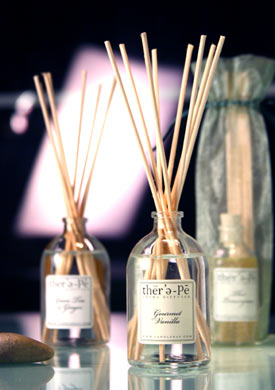Diffusing essential oils involves dispersing oils into a room or an area so that the aroma of the oils fill the room/area and is sufficient enough to be inhaled by people. Diffusing oils can be therapeutic and aromatic at the same time, thanks to the pleasant scent of oils or blends diffused. Some people tend to think that diffusing oils requires a lot of work, including purchase of expensive diffusers. Not really. There are methods using which you can diffuse oils with diffusers made of household things. If you are not satisfied with the kind of diffusers you use, you can probably try diffusers that are inexpensive and readily available in stores. This article will elaborate on how to use household things or cheap stuff as diffusers and reap the benefit of using a great diffuser from them.

Diffusing essential oils – Methods: There are several methods to disperse essential oils. Below are a few of them:
1. Simple Tissue Diffusion method: This method involves use of nothing but a tissue. You can use the tissue to diffuse oils instantly and get immediate benefit out of it. Take out a tissue and pour 3 to 4 drops of essential oils or essential oil blends on it. You may not be able to get the full aroma when the tissue is close by. But, when you move across the room, you will scent the fragrance of your blend. Though this diffusion is the easiest, simplest and most immediate, it cannot spread the aroma into an entire room. But this method can be used anywhere and is easily transportable.
2. Steam Diffusion method: A very common method. You can diffuse essential oils by using steam. That is, heat water and pour it into a bowl. Add about 10 drops of oil to the hot water. The heat will diffuse the oils and spread the aroma. Use lesser number of drops in case of oils which may cause irritation to your mucous membrane. Some of such oils include Cinnamon, Eucalyptus, Rosemary, Pine, Thyme, Cajuput etc. Relaxing oils diffuse well and make you feel fulfilled and happy. One of the defects of this method is, the aroma does not stay longer. Also, heat can alter the therapeutic effects of oils, unlike in other diffusers.
3. Candle Diffusion method: This is also a common method. You can try this at your home and anywhere you can burn a candle. Light a candle and allow it to burn for a few minutes. Once the candle starts melting, extinguish the light and pour a drop or two of essential oil on to the melted wax (near the wick) of the candle. See to it that your oil does not fall on the wick. Now, light the candle again and enjoy the aroma. The heat of wax and light of the candle will spread the aroma of the oil blend. Though this method is useful, it is not long-lasting and may cause serious danger on account of the high inflammability of essential oils.
4. Clay Pot diffusion method: This method can be followed if you have a clay pot diffuser made of terra coat. A small pot can be used if you cannot buy a commercial Clay Pot diffuser. Take a small pot and pour essential oil blends in to it. Close the pot with a cork, with just a single opening (of the size of a small hole). The aroma depends on the size of the hole and the quantity of oils in the pot. The aroma is the strongest shortly after you pour oils, but dissipates after time passes.





